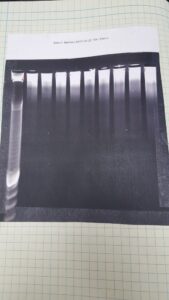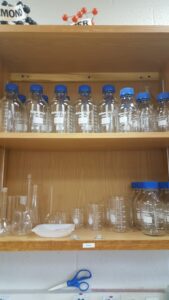This week I’ve been spending a lot of time working with the Nano ITC, so I thought I’d take some time to explain a bit about how it works. After all, this is what I’ll be using all summer!
| Thar she blows! The Nano ITC in all its glory! |
The Nano ITC, which stands for Nano Isothermal Titration Calorimeter, is a fun little box that can tell us all sorts of things about chemical reactions. In understanding what this instrument does, I find it useful to break things down word by word. First up is “Nano,” which means it’s pretty small. In fact, the ITC only uses about 350 microliters of sample per trial. That’s about .0006 times the size of a Venti cappuccino at Starbucks! This lets us use a lot less sample to get the same information.
| A view down the barrel of the ITC. At the bottom you can see the openings of the two chambers. The one in the center holds our sample and the one on the right holds our reference. |
The second word in the name is “Isothermal,” literally meaning “same temperature,” which is exactly how the ITC works. Inside this box of wonder are two chambers, which are held at the same temperature throughout the experiment. As the temperature of our sample changes, it is checked against a reference solution placed in the other chamber, and the machine adjusts its temperature so the two match. The ITC measures the amount of power it takes to keep these two chambers at the same temperature, which gives us our results.
| This is the syringe that the ITC uses to inject one of our solutions into the other. |
The third word in the name is “Titration.” This is a fancy chemistry word that basically means we’re adding one chemical to another. The ITC uses a syringe to slowly inject small amounts of a solution into our sample. This causes a chemical reaction which we can collect data about. Also, we don’t actually have to do anything after we start the machine, since the ITC does it for us! Finally, we have “Calorimeter.” This just means that the ITC measures information about the thermodynamics of whatever chemical reaction is happening in the machine.
Putting all this information together, we see that the Nano ITC is a device that lets us measure thermodynamic data about a chemical reaction between two solutions. It does this by measuring the power it takes to keep our sample and a reference at the same temperature, and it doesn’t even need that much solution to do it! And there you have it! That’s a basic run-down of the Nano ITC. It’s a really powerful tool that can give us a ton of useful information. Hope you liked the explanation, and I’ll be back next week with some results from this week’s testing!













